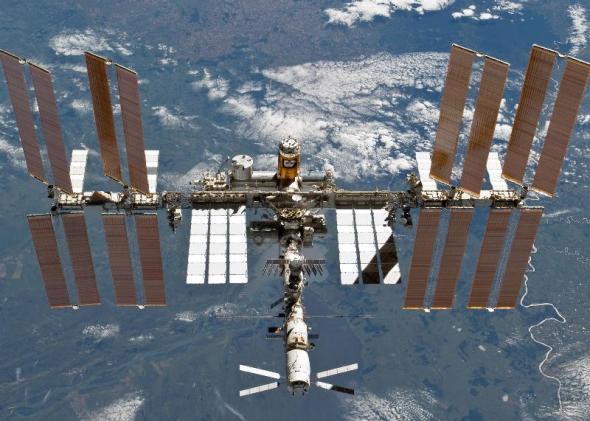This question originally appeared on Quora.
Answer by Robert Frost, trained ISS astronauts to operate the motion control system:
There is an entire division called operations division that is dedicated to planning around the logistics of the International Space Station. It is quite complex.
Traffic pattern can be complex. That is the scheduling of visiting vehicles. There are limits on how many vehicles can be there at any one time. They have to take into account the altitude of the ISS—it’s easier and cheaper to have vehicles arrive while the ISS is low. Launch windows vary, so sometimes the crew’s day and night schedules have to be altered to have them able to support a vehicle arrival.
Inventory is probably the most complex thing to manage. There are thousands and thousands of items on the ISS. The crew have barcode readers that they can use to keep track of supplies and locations of those supplies, but it isn’t perfect. Sometimes things get put away in the wrong place, and sometimes supplies get used at an unexpected rate. The crew can’t just nip out to Home Depot when they run out of batteries or Velcro strips. Food used to be a problem. A new crew might arrive and find that the last crew drank all of the coffee but left them 500 packets of mayonnaise. It becomes more complicated when we have to rely on other partners to deliver the supplies.
Vehicle resources like power and communications also have to be considered when planning activities. We don’t want to schedule several high-power-use activities at the same time or during eclipse. We also don’t want to schedule a critical activity during a time when space-to-ground communication might be flaky. Both of those variables are affected by vehicle attitude, which is affected by altitude, stack configuration, and beta angle.
Related to communications is the scheduling of public affairs activities. The onboard crew often speak to schools around the world. It can take a lot of finagling to line things up so that the event can happen during the school day while there is a good communication link and the crew is not otherwise tasked.
Payload experiment scheduling can be complex. There are hundreds of ongoing experiments, and we have to be careful to ensure they are all attended to properly and do not conflict with one another.
Every command that is sent to the vehicle, either by the ground or astronauts, is done using a certified procedure. There are thousands of procedures. Those procedures often have to be revalidated whenever the vehicle changes, sometimes because of new flight software and sometimes because of new hardware and sometimes because an operations concept has changed. A system that was backup may become primary, or operational limits for a device might change.
And then of course there is the logistics that are related to the fact the the ISS is an international partnership. Getting four different international agencies to coordinate and agree to things can take a lot of negotiation.
* * *
Answer by Jason Hutt, five years, life support systems instructor; three years, station training lead; two years, ISS CAPCOM; four years, ISS branch chief:
I’ll add some details to what Robert mentioned.
In the organization I’m currently in, we have a group of inventory and stowage officers (ISOs, pronounced ice-oh) who work in mission control every day in order to manage ISS logistics.
One of their challenges each day is just finding places to put stuff. In order to do anything onboard ISS—be it eat, do science experiments, do a spacewalk, repair some component, or even go to the bathroom—you will need to find something that is stowed somewhere onboard. Stuff that is routinely used is typically stored in set locations, while stuff that is rarely used is likely tucked away in some nook somewhere.
To help with this, almost everything is labeled with a barcode and scanned into an inventory management system that tracks the location of every item onboard.
We’re currently doing experiments with RFID tags to help us with finding and tracking things with the goal of someday automating all of this inventory tracking.
Supply vehicles are constantly arriving at and departing from the ISS. With that, it’s a constant challenge to unload a vehicle as it arrives, put everything it brought up into an appropriate stowage location, and then either pack the cargo vehicle with trash that will burn up on re-entry or pack it with experiments or other hardware that need to be returned home.
One of the other big challenges is managing trash. Every day the crew generates trash, be it wipes from cleaning things, syringes from blood draws, the wrappers those syringes come in, protective foam that encased a component when it was launched, food wrappers, or even large containers of urine or other human waste.
This trash has to go somewhere, and in order to keep the ISS from becoming a dump, we try to keep it all together. Just like at home, this trash can be pretty stinky. We always try to get stinky trash off the ISS as soon as possible.
There are lots of other daily challenges, including managing food and water, toilet supplies, clothing, and lots of spare components that are available if anything breaks.
More questions on International Space Station:
